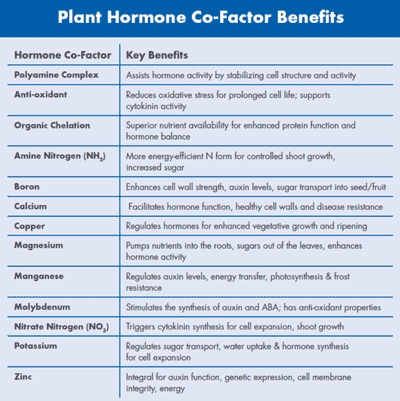Stress: How does one control ethylene?
How does one control ethylene?
It is controlled by the hormones that are supplied by the roots.
We must keep roots alive and healthy. If roots become dysfunctional, it may be possible to spray the hormones directly to the leaves.
If we could control the ethylene formation caused by stress, we may be able to increase nitrogen use and reduce the amount of pruning.
Table 1 describes the role of various crop inputs. You will notice that nitrate has an important role but so does amine N, so it is the balance that matters.
When you read through Jerry's explanation it 'rings true' with experience. Overly vegetative trees suffer stress to the point that during a vegetative year or 'on year' the energy is pulled away from the roots and buds to the growing point; and the following year, the fruitfulness and health of the tree reacts and comes in well below average. This reinforces the concept that we discussed previously: that the 'roots are the brains of the plant'.
The roots are the control centre of the plant and if kept properly and maintained, will direct the plant appropriately for optimal production.
At Stoller we propose the following
- Keep the roots alive by ensuring a supply of all nutrients, especially soluble calcium
- Do not over-fertilise with nitrate nitrogen, keep N nitrates in combination with other N sources
- Try to minimize stress of the roots (such as low water, salty water or poor soil health).
Below are some Stoller products and programs that can help
- Use RootFeed through the fertigation. This is a unique combination of amine (non nitrate) nitrogen and soluble calcium. It helps to ensure continuous new root growth throughout the growing season.
- Use a complete fertigation fertiliser such as Nutri-pHLow or ClearStart. These have a low pH and help the uptake of many nutrients that are present in the soil.
- Attend to other nutrient needs with foliar applications of single and multi-element fertilisers. Calcium, boron and zinc are three important elements for pollination.
- Use Stoller's AquaCal to displace sodium where salty conditions prevail in the root zone.
- Treat stressed trees with Bio-Forge and Foli-Zyme as foliar treatments following stress events. (See Stoller's stress recovery program.)
For more information, see Tree Fruit January 2015






















